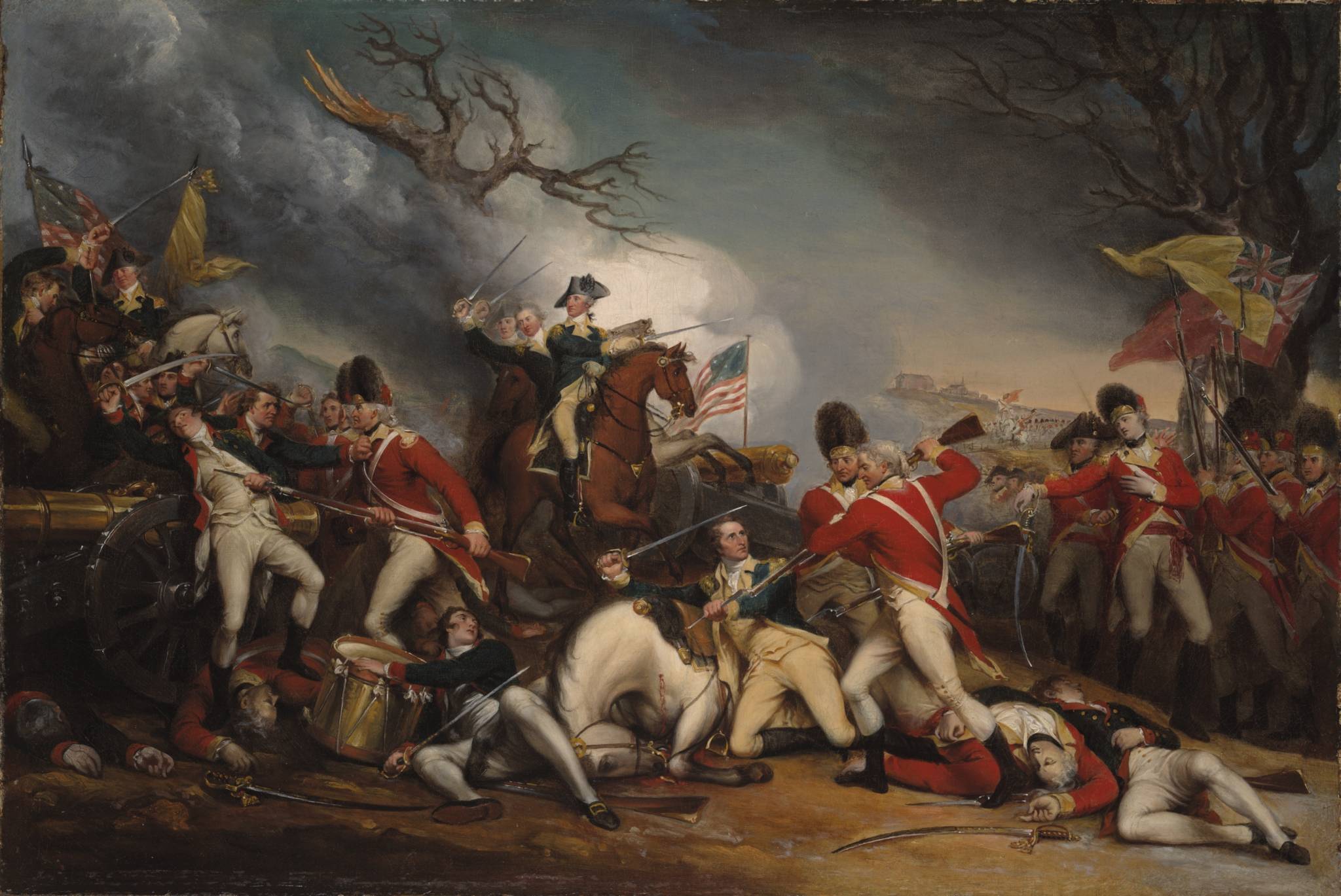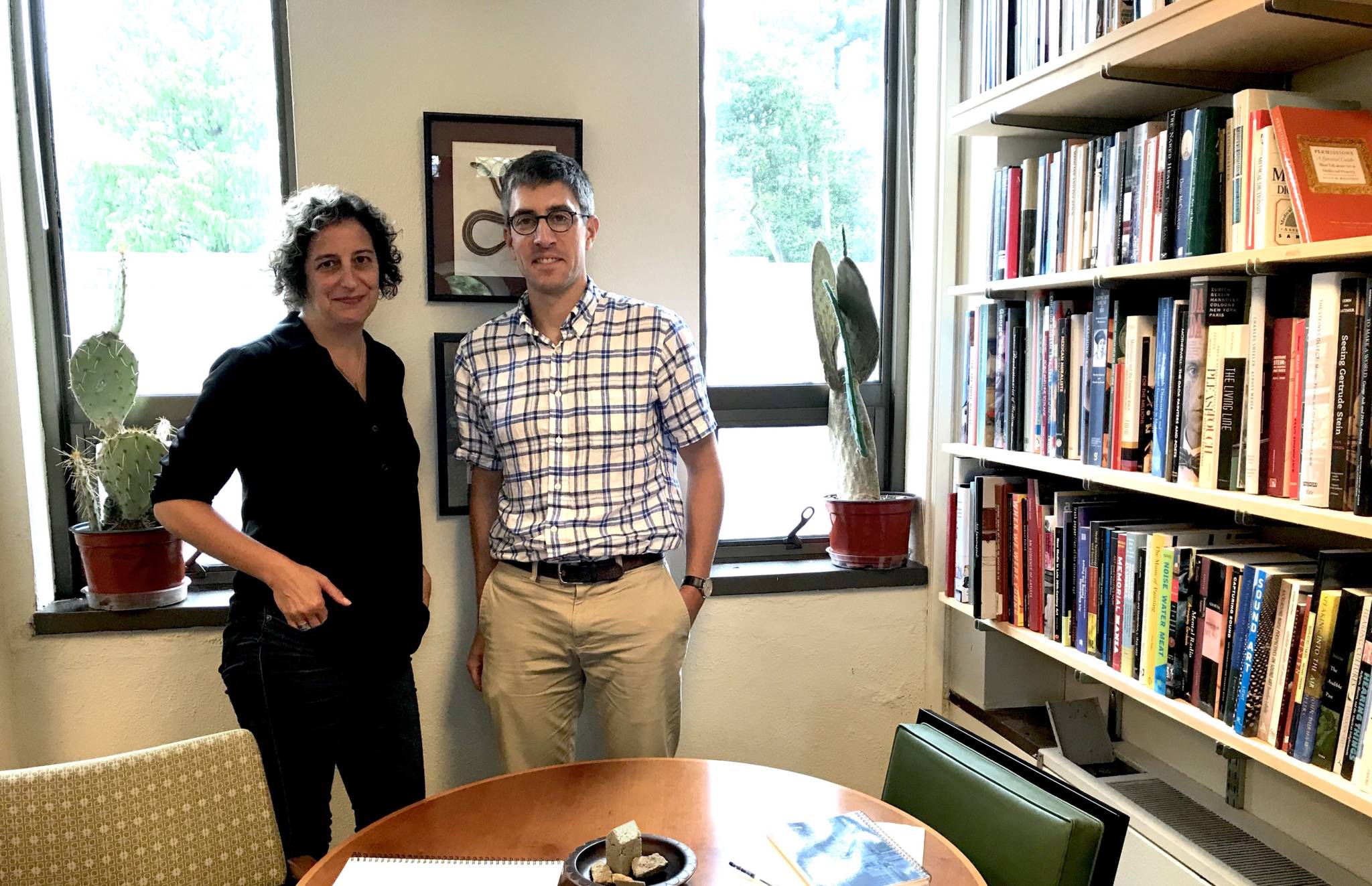The Battle of Princeton marked the first, or nearly the first, major American victory of the Revolutionary War. Because of the triumph, the colonial troops gained the fortitude to keep fighting. George Washington emerged a national hero, revered to the point of complaining about how often he had to pose for portraits.
So goes the traditional narrative, according to Nathan Arrington ’02, Associate Professor of Art and Archaeology, and Rachael DeLue, Professor of Art and Archaeology. They will challenge the consensus in their new, hands-on course HUM 350 / ART 302 / AMS 352: Battle Lab: The Battle of Princeton in Fall 2018.
“The Battle of Princeton is important today because it’s simply, in a literal sense, part of this nation-state’s history. But it’s also part of the story we tell about ourselves,” DeLue said, urging adoption of the tales that best capture the complexity of the past.
DeLue described the Battle of Princeton as a longstanding puzzle whose pieces lay separate. Battle Lab will start to assemble the jigsaw.
Unlike any previous endeavor, the class will integrate the Battle’s two streams of evidence, material findings and documents. Arrington, Director of the Program in Archaeology, will pool his archaeological expertise with the archival forte of DeLue, Associate Director of the Program in American Studies.
For example, DeLue envisioned testing a letter in which an officer recounts how the Battle unfolded. By examining whether musket balls appear where he claimed, students can depart from the writings that typically dictate history, or at least provide a more nuanced account.
The archival aspect will comprise correspondence, spy maps, and paintings about the Battle. Each will reveal a different dimension of the event. Angles might include the Revolutionary War, geology, Native Americans, real estate disputes, and more, DeLue noted.

The Death of General Mercer at the Battle of Princeton, 1777 by John Trumbull (Yale University Art Gallery)
Meanwhile, on the archaeological side, Arrington anticipated surveying the Battlefield, including a never-mowed patch of grass. Since the site of the Battle, more expansively understood, extends to Nassau Hall, the campus and the town will receive scrutiny. For instance, students will seek corpses under the Battlefield, Nassau Hall, Nassau Presbyterian Church, the Quaker Meeting House, and the Updike Farmstead. They will also study nearby homes or buildings in the context of the Battle.
Arrington said he expects to unearth an abundance of items. Recognizing which objects linger, like buckles, and which others have disappeared, such as clothing, will enable students to shape their own questions, he added.
The faculty, alongside visiting experts like local archaeologists and a forensic anthropologist, will teach why they chose certain approaches for Battle Lab. But they will also invite alternative suggestions.
“We want our students to have a sense of how different kinds of evidence contribute to historical understanding, and that there isn’t one single smoking gun out there that will give us the answer to all of it,” DeLue stressed.
To not only bring history to life, but also contribute to the community, the faculty are collaborating with the Historical Society of Princeton and the Princeton Battlefield Society. Battle Lab will produce a foundation for potential future research by students, faculty, or town members, DeLue said.
“If we can draw attention to the Battlefield, an awareness of what’s happened there and what continues to happen there, I think that all parties would be very, very pleased,” Arrington noted.
For one assignment, students will create walking tours of the Battlefield, town, and campus. The process will force them to analyze their sources, consider the meaning of giving history a voice, and supply the Princeton Battlefield Society as well as the Historical Society of Princeton with products to share, Arrington said. In addition, the students will present their takeaways to anyone interested at a Public Archaeology Day on Saturday, November 10.
Furthermore, after the class, students will have access to paid summer or academic year internships at the Historical Society of Princeton and the Princeton Battlefield Society, developed with the help of the Program for Community-Engaged Scholarship (ProCES). They might work on research, preservation, protection, or education, like new signage to engage all kinds of visitors to the Battlefield, according to Arrington.
The premise for Battle Lab hatched nearly two decades ago in the mind of Arrington. While majoring in the department where he now teaches, he visited the Princeton Battlefield on runs, or, once, in a precept accompanied by homemade sausages. The Battlefield’s history and beauty enchanted him from the start. He dreamed of investigating the land he loved.
“I have a bad habit of seeing things with archaeologist’s eyes, which means I want to see holes. The subterranean is always lurking,” he explained.
Arrington added that every summer, he leads Princeton students on excavations in Greece, where they transform in response to their visceral, tangible encounters with the past. He sought to bring that experience back to campus.
“I wanted to help students realize that they live, really, on an archaeological site, and that there’s history all around them, which they sometimes might take for granted just because it is so commonplace through their daily activities,” he said.
Arrington knew that previously, the Battle had only been studied outside the University. The Princeton Battlefield Society had commissioned archaeologists to vindicate the historical value of the Battlefield, so as to block construction of housing there by the Institute for Advanced Study. That project began to overturn the anecdote-based standard account, showing the need for further work, he said.
Establishing Battle Lab required a few years, to satisfy other faculty along with stakeholders in the politics surrounding the Battlefield, Arrington said. He emphasized that such a class, which DeLue called unprecedented in synthesizing archaeology and history to work in the field throughout a semester, could arise only with the support of an institution like the Humanities Council.
“My hope is that students get really ignited by intensive learning that happens outside of the classroom,” Arrington said. He depicted the goal as freeing, enlightening excitement that will translate into other areas of their work, motivating them to track down evidence wherever it may be.
DeLue said the course should give students a sense that they belong to a network suffused with the Revolutionary War, to overcome the impression that they live on one island, campus, apart from another island, the Battlefield.
Likewise, Arrington predicted that Battle Lab will instill a special sense of place in participants. Rather than admiring the University as outsiders, they will grow enmeshed in where they are, live, play, and study. Their surroundings will feel quite alive, he said.
“Princeton is very good about thinking globally. There’s a lot to be said for looking in your own backyard, at the good that can be done at many levels,” Arrington noted, spotlighting cultural heritage as the beneficiary of Battle Lab.
By Ruby Shao ’17
















